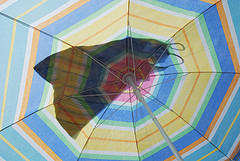"Leaves of three, let them be." It's sage advice when it comes to poison ivy prevention, but it doesn't really help to take the guesswork out of differentiating the plant from other, harmless varieties. If you're unsure exactly which three-leafed plants are off-limits, memorize these identifying traits:
1) Poison ivy has compound leaves.
Each compound leaf consists of three leaflets that share a stem, with the center leaflet always having the longest stem. The leaflets are usually jagged around the edges, but you might come across smooth-edged poison ivy leaflets from time to time. All poison ivy leaflets taper to a narrow point.
2) Poison ivy is usually glossy.
The leaves typically sport a waxy appearance. In the spring and summer, the leaves are bright green, while in the fall, they turn red—but they are always poisonous. The plant forms flowers in the spring and berries in the fall. The itchy blisters caused by poison ivy are an example of contact dermatitis; the reaction is due to urushiol oil present within all parts of the plant.
3) Poison ivy takes many shapes.
Shrub, bush, or vine, poison ivy takes on many forms, and it's not picky about where it grows. You might find it crawling up or tree or a fence or snaking across the dirt as a ground cover. Also note that poison ivy is found commonly all over the U.S.!
Do you have tips for identifying poison ivy or for treating the rash? Share them below!
How to Identify Poison Ivy [About]
The Mighty Poison Ivy Plant [Mayo Clinic]
How to Identify Poison Ivy [WikiHow]


 Equal Housing Opportunity
Equal Housing Opportunity